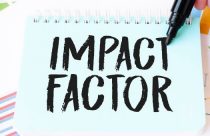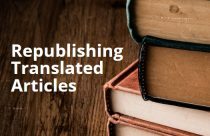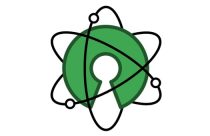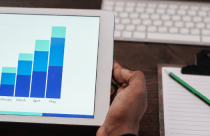Difference between Researchers Publishing in Low-Impact and High-Impact Journals

In a recent study, researchers from different hospitals and research institutions in Sao Paolo, Brazil investigated the differences between researchers publishing in low-impact journals and those publishing in high-impact journals. Using a web-based questionnaire, they could highlight some significant differences between these two groups.
Impact Factor and Its Consequences
All scientific publications are not considered to have an equal worth. The research community uses multiple metrics to estimate the overall “value” of a research article, by assessing its likely “impact” on the scientific community. One commonly used metric is the “impact factor” (IF) (Garfield, 2006). It is defined per journal, and each new publication in a journal has the value of the journal associated with it. This number is correlated with the number of times articles published in the given journal are cited by other articles. Other measures exist, such as the journal “half-life”, which estimates the decrease in the number of citations an article gets over the years that follow its publication. The different outreach values that the publications of a given researcher can have can be combined in order to assess the overall work of the researcher. This is generally done using the h-index (Hirsch, 2005). Many funding committees use this index in order to determine whether the worth of a researcher is on par with the proposed research project. The IF of the journals one publishes in, thus, has a durable impact on their career. Correctly estimating the worth of one’s research and publishing it in the best possible journal is thus an important choice.
Different Researcher Profiles According to Journal IF Values
In a recent web-based analysis, Paiva and co-workers studied whether there were differences in the profiles of researchers publishing in high-impact and low-impact journals. The authors ordered journals from the medical field according to their impact factor and classified the resulting second quartile as low-impact journals.
The researchers used web-based questionnaires, and the total number of profiles they could analyze was 269, over above 1500 invitations that were sent. They used different criteria in order to compare these two populations of researchers, being based, among other, on native language and the use of text editors, on the qualifications of the researchers, and on the tutoring of students.
Language
The likelihood of publishing in a high-IF journal was mainly related to whether or not English was the native language of the country where the research was carried out. This likelihood was 2.85 factors higher if English was the native language of the country (95% CI, 1.24-6.54, p=0.014; CI: confidence interval). This likelihood was also strongly affected if the researchers never used a “medical or text editor” before submitting their research, by a 10.9 factor (95% CI, 1.73-68.74, p=0.011). Among those using such editors sometimes or very frequently, the likelihoods of publishing in high-IF journals were non-significantly different (p>0.2).
The overall wealth of the country the researchers lived in also influenced their likelihood to publish in high-IF journals. While the median GDP for high-IF researchers was $40,900 (1st-3rd quartiles, 38.0-53.1×103), that median was $35,000 (13.0-39.1×103) among low-IF researchers (p<0.001).
Career and Research Activities
The number of students each researcher supervised also affected their likelihood to publish in high-IF journals. Seventeen percent of researchers publishing in high-IF journals supervised more than five post-graduate students, while these represented 11% of low-IF researchers; those supervising no post-graduate researchers represented 19.2% of the high-IF researchers, while this fraction represented 35.9% of the low-IF researchers.
The fraction of the time researchers dedicated to research also had an influence on their likelihood of publishing in high-IF journals. Eleven percent of high-IF researchers dedicated less than 25% of their time to research; these represented 51.7% of low-IF researchers. In the higher slices, 37.6% of high-IF researchers dedicated 75% or more of their time to research, when these accounted for only 11.6% of low-IF researchers.
Other Factors
Another factor affecting the likelihood to publish in a high-IF journal was whether regular funding from the government existed. While 79.1% of high-IF researchers declared to have such a regular funding, this fraction represented only 44.6% of the low-IF researchers, a significant difference (p<0.001).
A further difference between these two groups was the perception of the h-factor by the researchers. About one high-IF researcher out of three (30.1%) had no knowledge of the h-factor, while this fraction accounted for almost half of the low-IF researchers (45.2%) (p<0.02).
The impact of open access journals on low-IF researchers was not analyzed in this study. However, since open access publications are more common among researchers from ESL countries, an increase in the IF of open access journals will favor these researchers. Since IF of open access journals vary quicker than that of traditional journals, this trend is likely to be observed over the coming years.
Limitations of the Study
One possible bias of the study by Paiva et al., which is mentioned by the authors themselves, is the low response rate to the questionnaire. The response rate was indeed close to 18%. There could thus have been a bias in the analyzed sample of 269 researchers. Moreover, the researchers noted that the response rate was higher among high-IF researchers as opposed to low-IF researchers (22.6% vs. 13.4%).
The samples, as well as the parameters studied, do not enable one to identify causes for low-IF publications. It seems reasonable that researchers dedicating a smaller fraction of their time to research, or those not receiving regular government funding, are less likely to produce high-quality research, hence are more likely to publish in low-IF journals. These results must thus be accepted mainly on a descriptive basis.
References
- Eugene Garfield (2006, January 4) The History and Meaning of the Journal Impact Factor. Retrieved from http://jamanetwork.com/journals/jama/article-abstract/202114.
- J. E. Hirsch (2005, August 15) An index to quantify an individual’s scientific research output. Retrieved from http://www.pnas.org/content/102/46/16569.full









